|
   
| Review: - Contour HD Camcorder |
Contour HD Camcorder

www.contour.com
$279.00-camcorder
$40.00 for snorkeling housing
by Steve Douglas
Finally, the day was done and the project could be put to bed before a new one glared at me on the horizon. Laid back, turned on the Discovery channel to watch a wilderness survival show and there was the star of the show with a tiny little camcorder attached to his helmet. The scene switched from the main camera to the footage that was shooting from this little POV cam and I just knew I had to che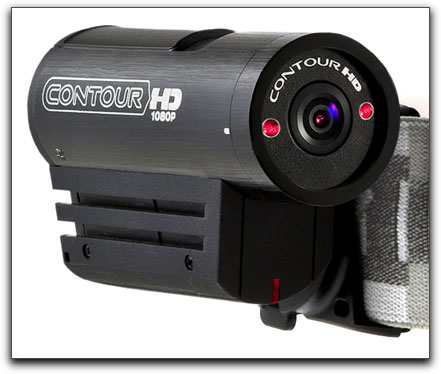 ck it out for myself. ck it out for myself.
The Contour HD Camcorder came nicely packaged in its own plastic case and, of course, I made sure I had the small water-tight housing meant for snorkeling that came with it. At first glance, it reminded me of a infinitesimal Red One cam simply because of its matte black finish and very solid feel. Of course, it is not in the Red One's league but I was quite impressed with what it offered for the price.
The Contour HD camcorder comes with a battery status light, separate record button as well as a unique record sliding switch for when it is used in the underwater housing. Additionally, it adds a memory status light, charge indicator, battery latch and its own resolution switch enabling you to change from the default resolution of 1920x1080 at 30fps to alternate settings of 1280 x 960, 1280 x 720, both at 30fps or to 1280 x720 and 848 x480 at 60fps. Audio was all 48Khz.
Powering up via USB cable was easy to do and a red light on the back of the camcorder indicates that the battery is charging. This light goes out with a beep once fully charged. The battery, while easily replaceable for a new one, appears to hold its charge quite well as it still has juice after using it on a recent trip to Honduras a few weeks ago. Generally, however, it takes about 4 hours to recharge a completely discharged battery.
To power on the Contour you just press and hold the power button and two laser pinpoint lights come on enabling you to align the lens horizontally depending upon how the cam is mounted. Since the Contour is really a POV type of cam, these laser lights really make it easier to properly aim the cam depending whether it is mounted straight up or on its side. The lens has an indented white marker clearly showing whether the lens is set for side use or straight up use when mounted on a helmet, bike or motorcycle bars or attached to the front or back of your canoe, kayak or surfboard.
The Contour will automatically shut itself off after 15 minutes of inactivity so there is little chance of your draining the battery completely should you have forgotten to shut it off.
The Contour HD comes with its own 2 GB microSD card but I immediately went out and bought a couple of larger capacity cards. It will take up to a 32 GB card should you so desire.
When shooting topside, the Contour does have a bit of a fish eye lens look to it. Not as much as some camcorders of this genre but present never the less.
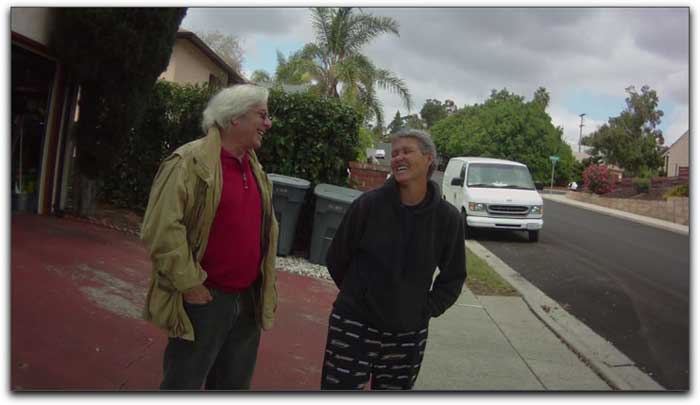
It's that fisheye look that makes my belly look a little larger than normal. ;-)
Though quite cloudy, the Contour still took a very usable clip.
There are many different mounts and accessories from Contour, all reasonably priced.
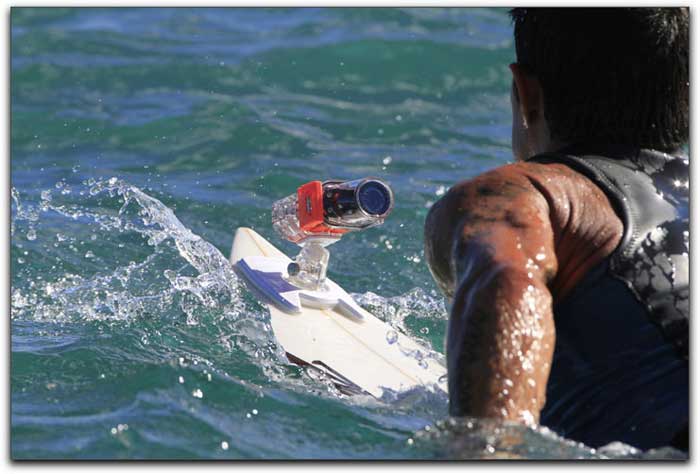
Mounting on your surfboard or kayak does require the waterproof housing but you can get some great POV shots this way.

An easy mount on your helmet whether skiing or riding your motorcycle.
The Contour Housing is not meant for scuba diving. It is strictly a waterproof housing which did a great job protecting the Contour HD Camcorder when snorkeling or when carrying and shooting topside. The Contour Cam slides firmly into the rails on the inside of the plastic housing. Two sturdy plastic safety latches function to make sure your camcorder is fully protected from the elements and there is a tripod screw mount on the bottom. While you may not have access to all the functions of the Contour, the housing does provide a power on/off button on the rear of the housing, laser alignment, and a sliding record on/off switch that couldn't be easier to use.
The waterproof case is a very light weight plastic housing that did a very commendable job of protecting the Contour HD cam from accidental scratches, rain and dust accumulation.
When using the Contour HD cam and housing underwater the plastic port contributed greatly to a very real softening of the image. I did not find this to be so when filming topside however.
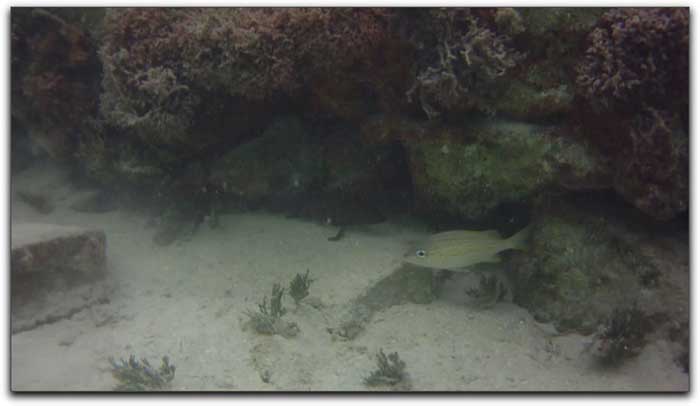
Held at just about one or two feet underwater and filming without lights, produced a less than professional clip.
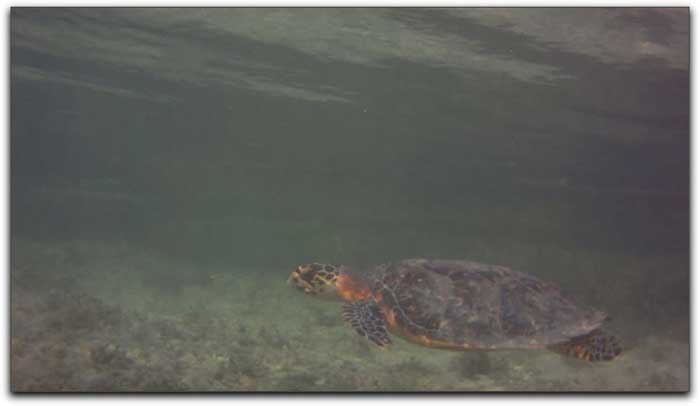
However, for home video and vacation shooting enthusiasts they would probably be just fine.
I was surprised at how well the Contour HD cam could shoot in some very low light conditions.
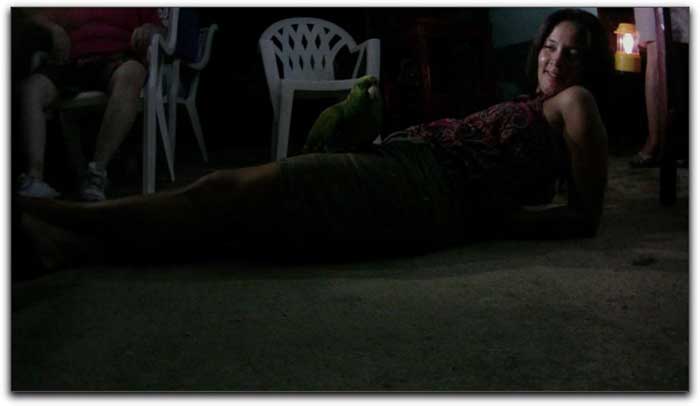
During a camping trip, light supplied from a small lantern was all that was used for this shot.
The Contour HD does shoot and produce MOV. files using the Ambarella AVC encoder. I found it best to bring these files directly into MPEG Streamclip where I could then name and export them into the codec of my choice before importing them into Final Cut Pro.
However, the Contour does come with its own software called Easy Edit which you can download from their site. After you register your camcorder with the cam's serial number, for notifications of software updates and such, you can use the Easy Edit software to import and name your footage.

Just as in Final Cut Pro, you can identify and label any clip.
It is also from within the Contour HD that you may change the Contour HD resolution settings. On the back of the Contour is a hi and low switch. Within the Easy Edit preferences I set the Contour to the setting I felt I would use the most which was the 1920 x 1080 @30fps. I changed the low setting to the alternative resolution of 1280 x 720 @ 60fps.
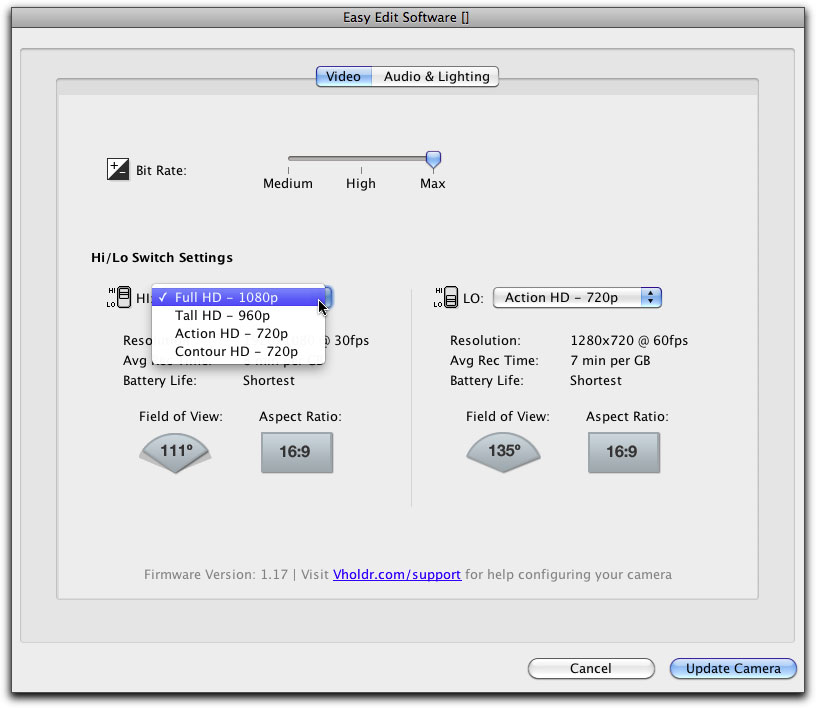
You cannot change the video resolutions without the Easy Edit software installed and the Contour HD connected to your computer.
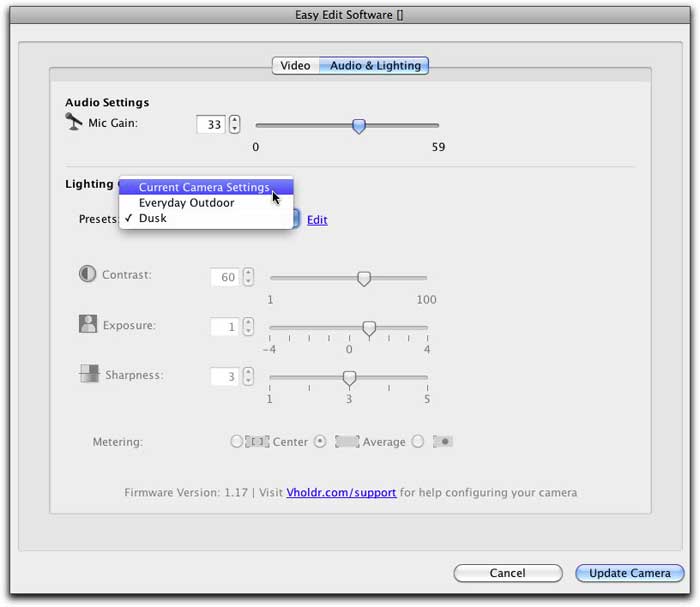
It is in these same Easy Edit preferences where you can change both the video exposure and audio settings.
While I said before, that I prefer to use MPEG Streamclip to transcode my footage shot with the Contour, the Easy Edit software does allow you to set in and outpoints for your clips, delete clips from the Contour HD cam itself after importing and share or email your clips with others.
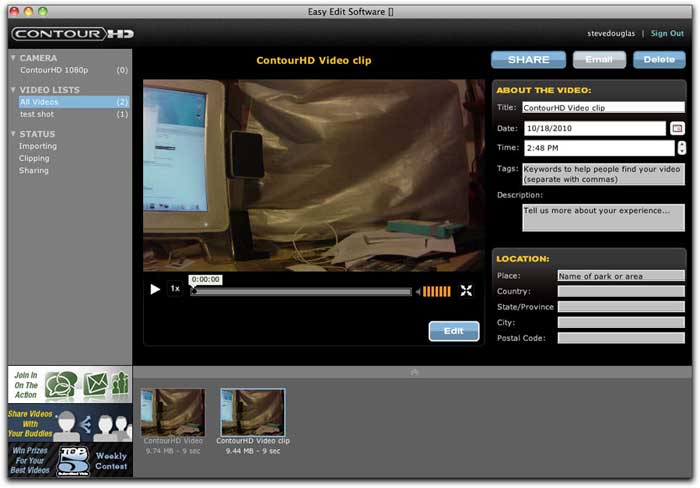
Unfortunately, the most difficult part of setting up and using the Contour HD camcorder is that there is no monitor of any kind, so knowing just where your camcorder is aimed, and adjusting for composition, is completely a hit and miss operation. This is not the case however, if the Contour is mounted on a tripod because then the laser lights would be able to guide your aim properly. I found that aiming the Contour HD a little bit higher than was my inclination did the trick. When shooting handheld shots, due to its very light weight, any movement is clearly going to have a greater effect than with considerably heavier camcorders. The ContourHD1080p's 135mm lens captures a fairly wide angle view which contributes to that fisheye lens look I made mention of. The camera reacts to light changes quickly and noticeably. If you move out from a shadowy area into one with sun, you'll get a few overexposed frames, and some underexposure when returning to the shade. Never the less, this is a great little POV camcorder and for the skydiver, skier, canoeist or dirt bike rider in you, it is a great way to film your adventures. For the independent journalist without an iPhone video, this little point and shoot Contour will fit just fine in your pocket and be ready when you are. I liked it, now I have my own little Red One wanna be.
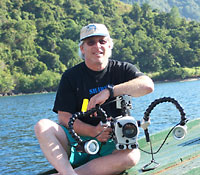
Steve Douglas is a certified Apple Pro for Final Cut Pro 7 and underwater videographer. A winner of the 1999 Pacific Coast Underwater Film Competition, 2003 IVIE competition, 2004 Los Angeles Underwater Photographic competition, and the prestigious 2005 International Beneath the Sea Film Competition, where he also won the Stan Waterman Award for Excellence in Underwater Videography and 'Diver of the Year', Steve was a safety diver on the feature film "The Deep Blue Sea", contributed footage to the Seaworld Park's Atlantis production, and productions for National Geographic and the History channels. Steve was a feature writer for Asian Diver Magazine and is one of the founding organizers of the San Diego UnderSea Film Exhibition. He is available for both private and group seminars for Final Cut Pro and leads underwater filming expeditions and African safaris with upcoming excursions to the Cocos Islands, Costa Rica, Lembeh Straits, Indonesia, and Wakatobi. Feel free to contact him if you are interested in joining Steve on any of these exciting trips. www.worldfilmsandtravel.com
copyright © Steve Douglas 2010
This article first appeared on www.kenstone.net and is reprinted here with permission.
All screen captures and textual references are the property and trademark of their creators/owners/publishers.
|